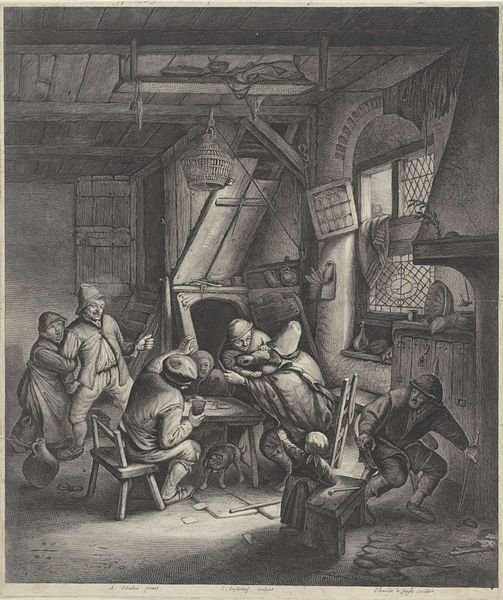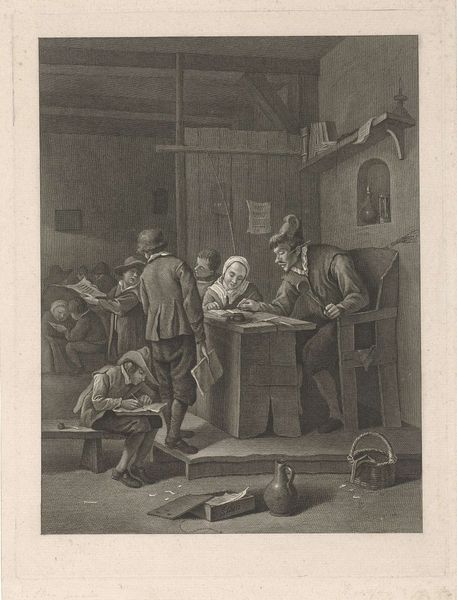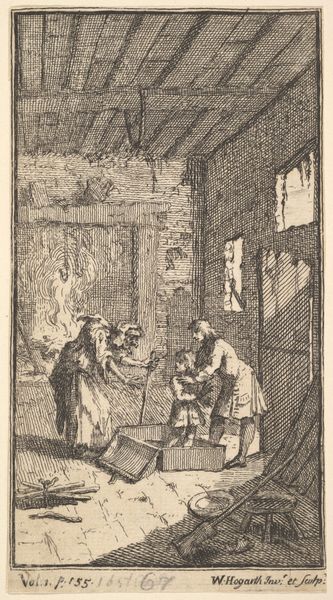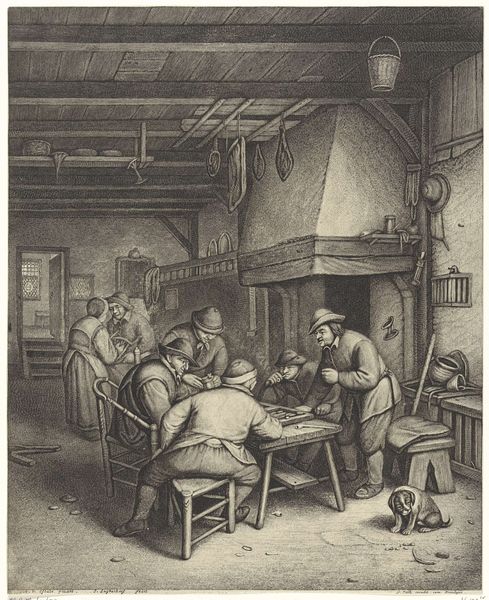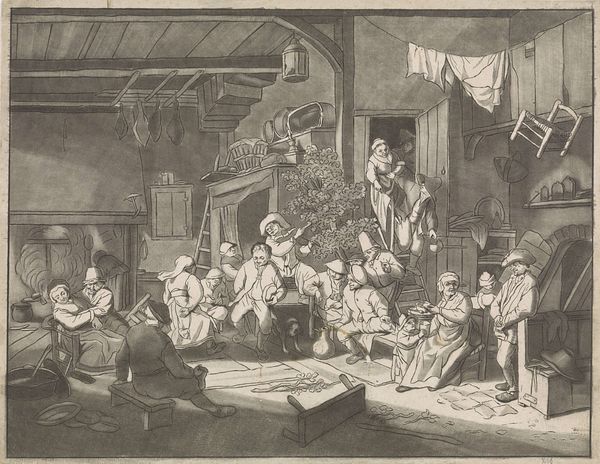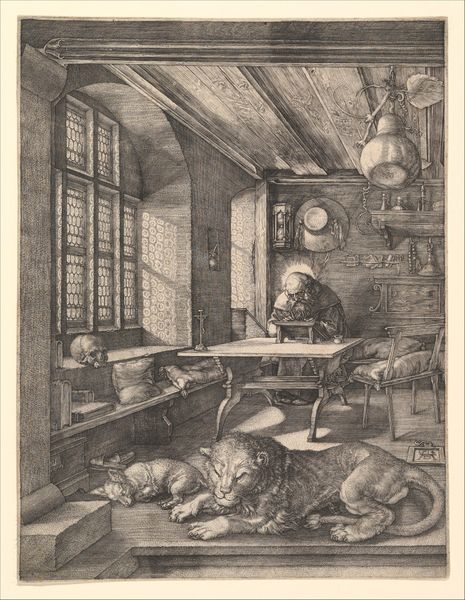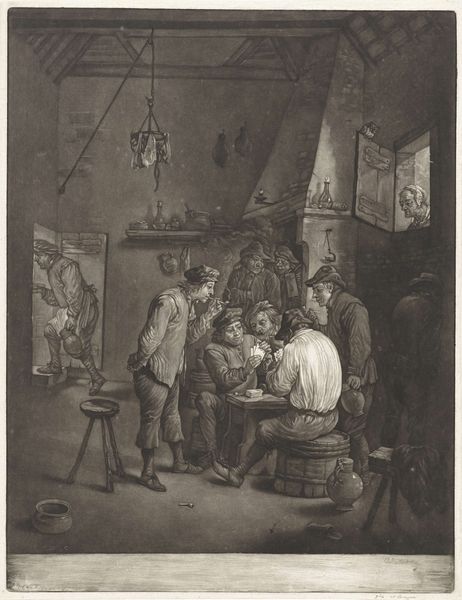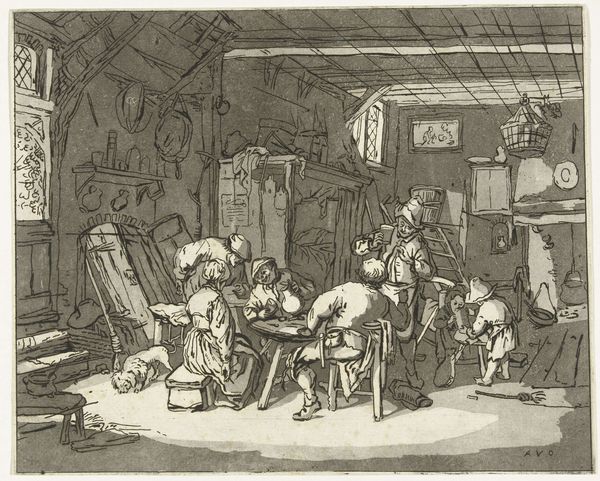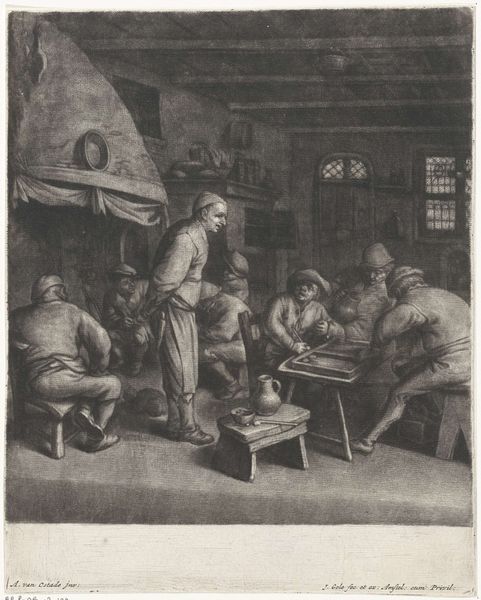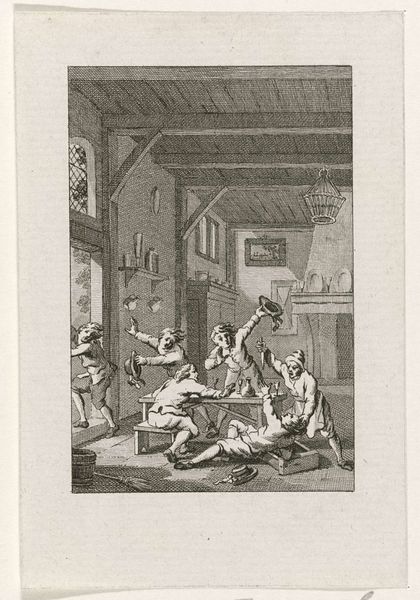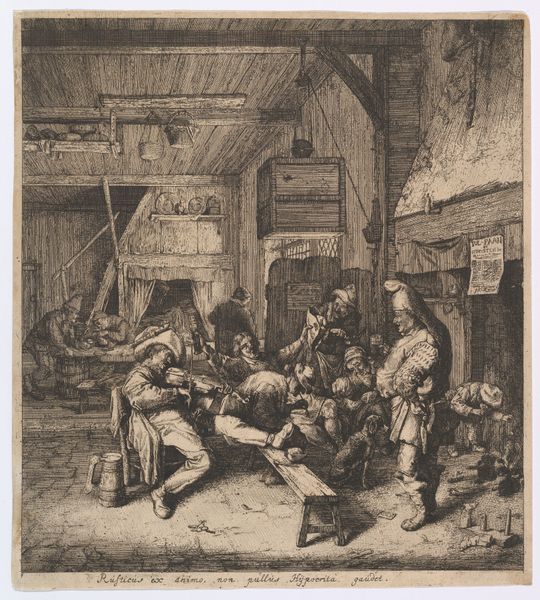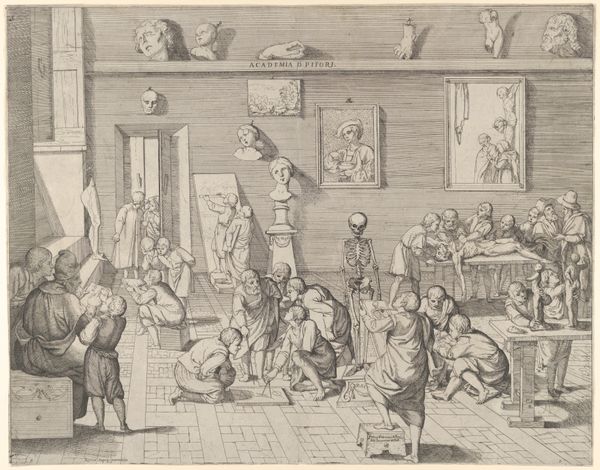
drawing, paper, ink, pen
drawing
narrative-art
dutch-golden-age
figuration
paper
ink
pen
genre-painting
Dimensions: height 230 mm, width 192 mm
Copyright: Rijks Museum: Open Domain
Curator: This is "Herbergscène," a pen and brown ink drawing on paper, created sometime between 1778 and 1838, and attributed to Anthonie van den Bos. The piece calls to mind Dutch Golden Age painting in some ways, like that of Adriaen Brouwer for example, who made this type of genre scene his specialty. What's your immediate impression? Editor: Well, immediately, it feels… lived-in. Not pristine or idealized at all. There’s this controlled chaos— a spilled jug, scattered dishes on the floor—suggesting the joyful, messy reality of human gatherings. Like Bacchus had too much and spilled his wine… but in this case its a 18th-century dutch party Curator: I see that. I’m drawn to the subtle narratives woven into the composition. Observe the dog lapping up spilt contents near the toppled jar, juxtaposed against the group gathered at the table, their faces a mix of conviviality and inebriation. Editor: Precisely. That dog… it’s almost a Dionysian symbol itself. In many cultures, the dog represents not just fidelity but also the wild, untamed aspects of human nature. Its placement by the spill… suggests that intoxication spills outward, disrupting order. It echoes themes of hedonism. Curator: Absolutely. The artist's use of light and shadow to create depth is also noteworthy. The figures are rendered with remarkable detail, despite the relatively small scale of the work. Notice, the window in the upper corner and that bouquet above the closed-door Editor: Yes, the broom hanging on the wall… a powerful, old domestic symbol that might not read directly to a modern audience. In medieval art, a broom, hanging or cast to the ground in such scenes of celebration might refer to women and household work, and often as the antithesis of revelry. Its inclusion offers layers of interpretation of those present in the scene, don't you think? Curator: I think you make an important observation! Perhaps it's about the implied contrast between labor and leisure, duty and pleasure... And Van den Bos gives it an ambiguous presence. It invites questions rather than prescribing a singular meaning. Editor: Indeed. That duality, I think, is what gives the drawing its lasting appeal. The iconographical cues invite us to decipher it in a personal manner. I also think it’s great. What a simple picture. Curator: For me, it captures the ephemeral nature of these communal moments of shared joy and release, a tiny visual poem about what it means to come together and enjoy a pause from our regular days, whether that be home making or something else. Editor: Well, thanks for having me! These were a fun few minutes, if only they made some great beer, wine and even gin.
Comments
No comments
Be the first to comment and join the conversation on the ultimate creative platform.
